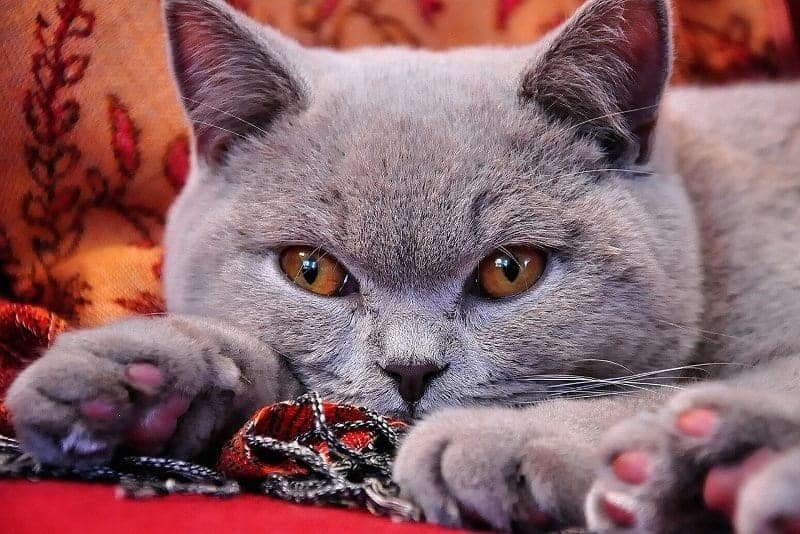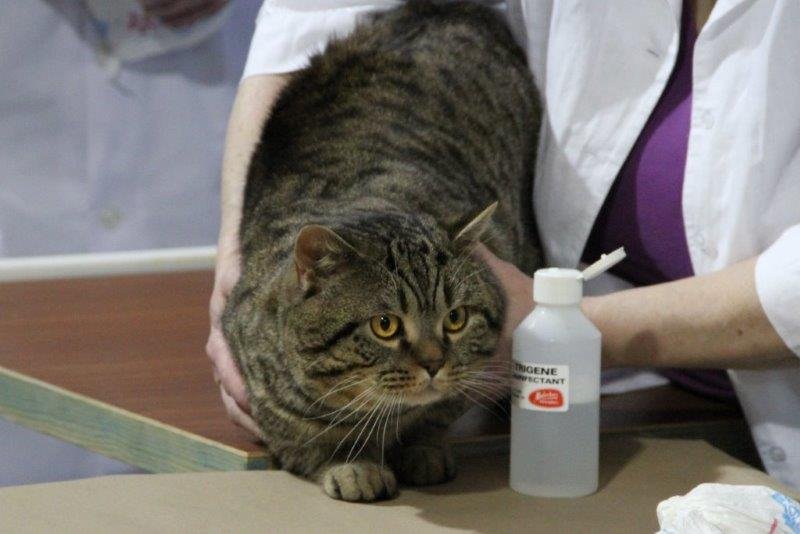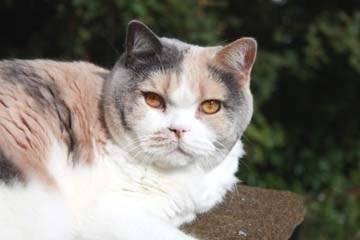


British Shorthair Cat
How would you like an in depth look at the British Shorthair cat breed profile?
You've always been attracted to British Shorthair cats and just want to make sure the breed is right for you before finding a kitten.
You have a few questions, maybe even a few concerns . . .
More...
So as a GCCF British Shorthair cat judge and I am sure I can help.
Let me introduce you to the wonderful British Shorthair cat breed.
Introducing British Shorthair
The British Shorthair Cat is one of the most popular breeds of choice in the United Kingdom. As a relatively calm breed of cat, the easy-going British Shorthair adapt well to life as indoor cats.
British Shorthairs are a medium to large breed of cat, with muscular, cobby bodies that make them look like cuddly teddy bears. Their short, plush coats are fairly easy to maintain with weekly grooming sessions.
History of British Shorthair Cats
As their name suggests, this breed of cat originated in Great Britain and are probably one of the oldest breeds of English cats around today. The ancestry of British Shorthairs is said to go back as far as the early domesticated cats of Rome, which possibly came over to Britain as early as the first century.
Originally this breed was prized for its great hunting ability and would have been kept as domesticated pest control. Nowadays, of course, they are prized for their stunning good looks and their affectionate natures.
Breeders in the 19th century and beyond worked hard to develop the pedigree British Shorthair as we know it today. The original British Shorthair cats were crossed with Persians to give them the thick, plush coats they are so famous for. Since then, British Shorthair cats have changed very little.
British Shorthair Cat Description
British Shorthairs are a medium to large sized breed of cat, with compact, cobby bodies. They should look powerful and muscular with thick, short necks and a massive, round head. Their ears should be medium in size; set fairly well apart and they should have large, round eyes. They have thick tails that should be rounded at the tip. Their tails should be no longer than 2/3 the length of their body.
A British Shorthair has a dense, short coat that feels firm and plush when you touch it. They have a lot of undercoat, contributing to their teddy bear-like appearance.
They are available in most colours and patterns including tabby and bi-colour, tortie and colour-point. The most popular colour is the British Blue.
Eye colour depends on the coat colour, with many British Shorthair having copper eyes. Other eye colours include green, gold, blue and odd eyed. Colour-points always have blue eyes.
Interesting British Shorthair Facts
The British Shorthair almost went extinct during World War II due to food shortages.
The Cheshire Cat from Lewis Carrolls’ Alice in Wonderland was inspired by none other than a British Shorthair.
Personality of British Shorthairs
British Shorthair Cats become very attached to their people and are very affectionate with the people that they love. They will bond jealously with one or two people.
Kittens are very lively and playful, and are considered late developers not reaching full maturity until they are at least 2 years old. However, as they mature they become very calm and easy going, so are not considered a bothersome breed of cat.
British Shorthairs get on well with other cats, of all breeds, and even with dogs. They are an intelligent breed of cat and are easily trainable. They will enjoy being challenged with toys containing treats
British Shorthairs are very quiet and won’t make a nuisance of themselves. They are not necessarily considered to be lap cats and they do not usually enjoy being carried around. But they are very affectionate and enjoy human company.


GCCF cat judge Ross Davies
Ross Davies
"A friendly, healthy breed that get on well with children and other pets. Not the most active of cats though!"
Grooming & General Care
British Shorthairs are very easy to groom and their short, thick coats will only need a brush or a comb once a week to keep them looking good. Be sure to remove all the dead hair during this weekly grooming session.
When the British Shorthair starts to shed you will need to groom them two or three times a week. This usually occurs for a couple of weeks in the spring and the autumn as they grow their new coats.
As with all breeds of cat, grooming should include keeping their claws trimmed and their ears clean and free from dirt. British Shorthair kittens quickly get used to being groomed and having their ears and teeth checked weekly.
Health of British Shorthair Cats
British Shorthairs are a healthy breed in general, but as with all pedigree breeds of cats have the potential to inherit certain genetic disorders and diseases.
One thing to beware of is a hereditary heart defect, hypertrophic cardiomyopathy (HCM). All responsible breeders will screen their breeding cats for this defect and it doesn’t just affect British Shorthairs, it also affects other popular breeds.
Another is Hemophilia B which is a bleeding disorder. There has been a DNA test established to help breeders identify carriers and affected cats.
British Shorthair Cat Gallery
Below are some British Shorthair cat pictures, please feel free to contact us if you would like to contribute any photos of your own British Shorthair cats and kittens, we would love to include them!










Commonly Asked Questions
Click the questions to reveal the answers...
How long do British Shorthair cats live?
Do British Shorthairs meow a lot?
Are British Shorthair cats active?
Do British Shorthair cat like being cuddled?
Useful Resources
Here are a few of the most useful resources I am happy to recommend.

I love my British blue he is lovely but dose not take kindly to people he does not know.